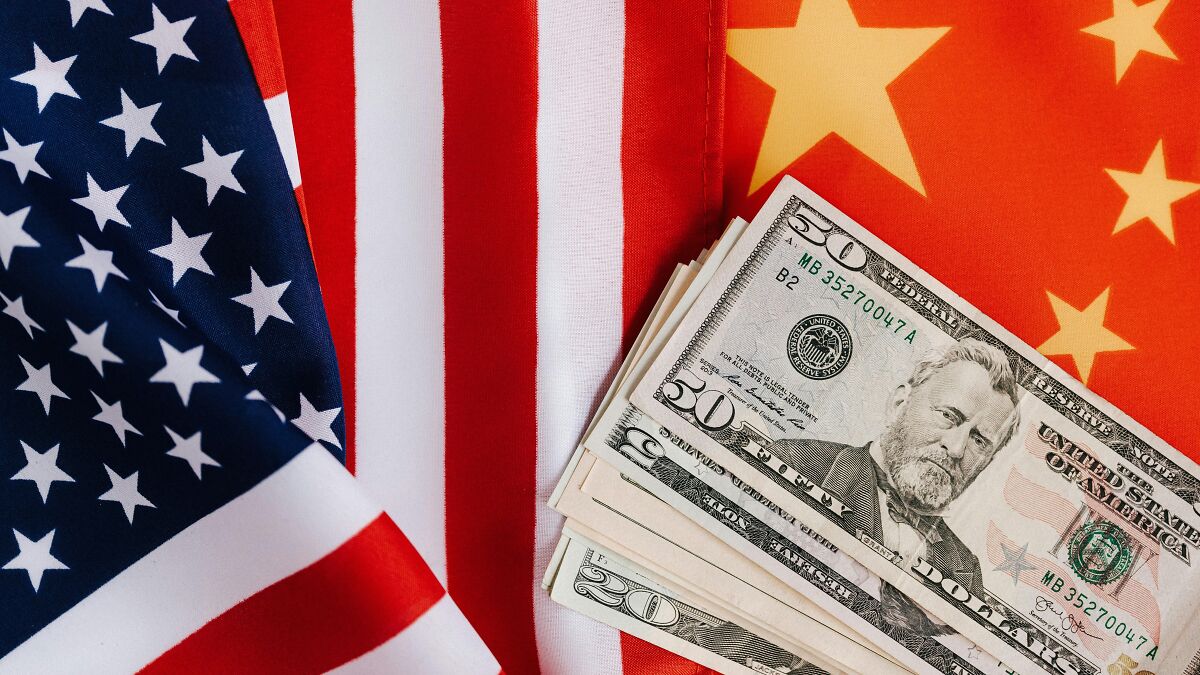
The Dollar’s Crown Is Slipping As BRICS Nations Rewrite The Rules Of Global Power
For much of the past century, the global economy has revolved around the United States and its currency.
The dollar’s dominance, cemented after World War II and reinforced through the rise of the “petro-dollar” system in the 1970s, has solidified American financial clout.
However, in 2025, the foundations of this system are being increasingly questioned. At the center of this challenge sits BRICS, a socio-political bloc until recently comprising Brazil, Russia, India, China, and South Africa.
- BRICS expanded rapidly from 2024 to 2025, adding key nations and challenging Western economic dominance with a diverse coalition.
- If made official, Saudi Arabia’s BRICS membership may shift oil transactions from dollars to yuan, threatening the petrodollar system for the first time in decades.
- The U.S. dollar’s global role is weakening as de-dollarization grows, fueled by internal weaknesses and alternative financial systems abroad.
- BRICS blends diverse political regimes united by a shared aim to reduce U.S. influence, despite internal contradictions and competing priorities.
- The growing BRICS-OPEC nexus couples energy control with currency diversification, reshaping global finance, and weakening U.S. economic leverage.
The bloc expanded in 2024 to include Egypt, Ethiopia, Iran, and the UAE, welcomed Indonesia in 2025, and is still courting Saudi Arabia.
The BRICS nations have long styled themselves as an alternative to Western hegemony, yet their latest moves suggest more than just anti-West rhetoric.
BRICS leaders at the 17th BRICS Summit in Rio de Janeiro on July 7. Image credits: Murat Gok/Getty Images
This week, Trump claimed Russian President Vladimir Putin, Chinese President Xi Jinping, and North Korean leader Kim Jong Un are conspiring against the U.S., framing Beijing’s military parade Wednesday as a coordinated threat amid global power shifts.
Against the backdrop of persistent U.S. debt and shifts in the global energy landscape, BRICS and its partners could emerge as decisive players in shaping the future.
The question is whether this coalition has the unity, credibility, and strategic clarity to mount a true challenge, or whether it remains a symbol more than a system.
The dollar and its discontents
The strength of the U.S. dollar rests on three pillars: its status as the world’s reserve currency, its central role in international trade (especially oil), and the perception of the U.S. as a stable political and financial actor. Each of these pillars is under pressure.
First, de-dollarization is no longer a fringe idea. From Moscow to Riyadh to Beijing, governments are experimenting with alternative systems, including bilateral currency swaps and digital payment frameworks.
Russia, cut off from much of the Western financial system after its invasion of Ukraine, has been forced to accelerate these efforts, and China has enthusiastically promoted the yuan in trade with the Global South.
There are questions about whether Washington can sustain global trust. Image credits: Sobia Akhtar/Pexels
Second, the very basis of the petrodollar, where oil sales are denominated in dollars, is shifting. Saudi Arabia’s official entry into BRICS could be a major turning point, because while Riyadh has not abandoned the dollar, it has made clear that it is open to settling oil contracts in Chinese yuan or other currencies.
With the Organization of the Petroleum Exporting Countries’ (OPEC’s) production policies increasingly aligned with BRICS members like Russia, the possibility of a post-dollar energy trade is more plausible now than at any time since the 1970s.
Third, America’s internal weaknesses are beginning to erode confidence. High inflation, ballooning national debt, a lousy job market, and political gridlock have all raised questions about whether Washington can sustain the global trust it has long enjoyed.
The dollar is not disappearing tomorrow. Its network effects are vast. However, for the first time in decades, countries are preparing for a world where the greenback is not the only option.
Strong opposition from the world’s biggest countries like India and China could lead to the collapse of the U.S. dollar. Image credits: Kaboompics.com/Pexels
BRICS expansion: Strength or strain?
The expansion of BRICS has been celebrated as a symbol of multipolarity, but it also presents a stress test. The inclusion of full members like Iran, the UAE, Egypt, Ethiopia, and Indonesia, alongside core members such as Russia, introduces both opportunity and friction. While the bloc gains greater influence over global energy flows—especially through Russia and the UAE’s roles in OPEC+—it also faces potential internal divisions, as national interests and regional rivalries may clash.
China and India are both major importers of oil and gas, but have very different geopolitical and social priorities. India is focused on aligning with an exclusionary ideology in its building of a Hindu nationalist state. China’s focus is on technological leadership and gaining geopolitical positioning.
Brazil’s priorities, meanwhile, revolve largely around agricultural exports, and Russia has prioritized financial and trade mechanisms to reduce its vulnerability to Western sanctions. South Africa and Ethiopia, the smallest economies in the bloc, have limited financial clout but important geographical positioning. This heterogeneity makes coordinated action difficult.
Yet the symbolism of BRICS is powerful. In the Global South, it represents a collective demand for autonomy, which creates a space outside Western institutions like the International Monetary Fund, the World Bank, and NATO.
For emerging markets weary of Washington’s dominance, BRICS offers the optics of choice.
The OPEC-BRICS nexus
Energy remains the hinge on which much of this debate turns. OPEC, and particularly OPEC+ (the larger group of OPEC members, including other oil-producing countries), has long coordinated oil production to balance prices. With Russia and quite possibly Saudi Arabia inside the BRICS club, the overlap between the bloc and the world’s most important energy cartel is tightening.
OPEC’s headquarters in Vienna, Austria. Image credits: Michael Nguyen/Getty Images
This matters because energy is still priced predominantly in dollars. Any shift, even partial shifts, toward alternative currencies would reverberate across financial markets. If, for example, a meaningful portion of oil contracts were settled in yuan, it would strengthen China’s hand while simultaneously weakening the automatic global demand for dollars. This does not mean the dollar would collapse, but it could gradually erode America’s unique privilege: the ability to borrow cheaply and finance deficits without fear of currency flight.
For emerging markets, this could be a double-edged sword. On one side, a multipolar currency order might reduce vulnerability to U.S. interest rate hikes, which often trigger debt crises in the Global South. On the other, increased currency fragmentation could raise transaction costs and create volatility. The benefits of a weakened dollar are not evenly distributed.
South Africa’s precarious balancing act
The paradoxes of this moment have been perfectly portrayed by South Africa. Pretoria has taken a bold stance in condemning Israel’s actions in Gaza, even pursuing legal action at the International Court of Justice. This positions South Africa as a moral leader in the Global South and aligns it with BRICS sentiment, particularly among Arab and Muslim-majority members.
Yet, regarding Russia, South Africa has been far more cautious. Despite being a democracy with close economic ties to the West, it has resisted taking sides in the Ukraine war, citing “neutrality” while continuing to engage closely with Moscow.
For critics, this is hypocrisy. For Pretoria, it is pragmatism. South Africa’s economy is deeply reliant on BRICS ties, particularly with China and Russia, and alienating these partners would come at a steep – and inconvenient – cost.
South Africa’s position on the Israel-Palestine conflict is contradictory. Image credits: Mohammed Abubakr/Pexels
This dual stance highlights a broader truth: BRICS is less about ideological unity than about hedging. Each member seeks to maximize its room for maneuver in a turbulent world. For South Africa, that means championing justice in Palestine while sidestepping confrontation with Russia.
We need to understand that, despite its strong public stance against Israel, South Africa’s position is complicated by private business interests.
Multinationals like Glencore, with deep roots in South Africa, have significant dealings in Israel, including in mining, energy, and commodity trading. These corporate links mean that while Pretoria condemns “Israeli apartheid” on the global stage, its economic ecosystem is still entangled with Israeli (and thus U.S.) capital.
The contradiction underscores the gap between rhetoric and reality: South Africa projects itself as a champion of liberation, specifically Palestinian liberation, while its private sector profits from the very structures of the occupation it denounces.
Beyond economics: The wider impact of BRICS
The influence of BRICS is not confined to finance and trade. Socially, politically, and environmentally, the bloc is reshaping how the world thinks about power. For much of the Global South, BRICS represents a kind of solidarity — a symbolic counterweight to Western domination.
This carries significant social resonance: countries once relegated to the periphery of world affairs are now claiming a seat at the table. With more than 40% of the global population, much of it young and rapidly urbanizing, BRICS countries embody a demographic force that stands in stark contrast to the aging populations of the U.S. and Europe.
For Washington, this is not just an economic concern but also a cultural one, as narratives of post-colonial resurgence challenge America’s soft power.
U.S. President Donald Trump and Saudi Crown Prince Mohammed bin Salman at the Saudi Royal Court in Riyadh in May. Image credits: Win McNamee/Getty Images
Politically, BRICS is carving out space for alternatives to Western-led institutions. The New Development Bank and proposals for independent payment systems signal an intent to escape the orbit of the IMF, World Bank, and Society for Worldwide Interbank Financial Telecommunication (SWIFT).
For the U.S., this undercuts traditional levers of influence, from structural adjustment programs to sanctions. Yet the bloc’s diversity also reveals its contradictions: democracies such as Brazil, India, and South Africa sit alongside countries that are considered authoritarian regimes like China, Russia, and Iran. That these states can work together despite clashing governance models speaks less to ideological unity than to a shared desire for autonomy from the U.S..
The environmental dimension is equally crucial. BRICS countries are among the world’s largest polluters: China and India through coal, Russia through oil and gas, Brazil through deforestation, and South Africa through heavy reliance on fossil fuels. Coordinated action to preserve fossil fuel dominance could weaken global climate efforts, while any united stance on energy transition would reshape markets.
China’s focus on technology is making it a tough competitor for the U.S. to deal with. Image credits: Zhang Lang/Getty Images
At the same time, China’s near-monopoly in renewable technologies, from solar panels to rare earth processing, positions BRICS at the forefront of the green transition. For the U.S., this threatens not only its environmental credibility but also its industrial strategy, as it scrambles to bring back green manufacturing through subsidies.
Economically, the ripple effects extend far beyond the dollar. If the BRICS New Development Bank matures into a serious lender, debtor nations may increasingly turn away from the conditional loans of Western institutions. Trade corridors linking Africa, Asia, and Latin America through Belt and Road-style infrastructure projects could bypass U.S.-controlled maritime and financial choke points.
Even more critically, if BRICS members diversify their reserves away from U.S. Treasuries, Washington’s ability to finance its debt cheaply could erode, raising borrowing costs at home. That would feed directly into domestic American politics, where higher interest rates and reduced fiscal space threaten welfare spending, infrastructure investment, and social stability.
Trump, perception, and the shifting Global South
The Trump presidency accelerated many of the trends that now bolster BRICS’ appeal. For leaders across the Global South, Trump embodies the volatility of American power: unpredictable, unilateral, and often dismissive of international norms.
His withdrawal from multilateral agreements like the Paris climate accord, the Iran nuclear deal, and the Trans-Pacific Partnership signaled that Washington’s commitments could no longer be relied upon. This undermined the very credibility that sustains dollar hegemony and U.S.-led institutions.
For BRICS members, Trump’s approach had a dual effect. His transactional foreign policy validated their critique of U.S. dominance as self-serving and coercive. But it also created diplomatic openings. Specifically, China and Russia have capitalized on Washington’s retreat from global leadership, presenting themselves as steadier, if not more benevolent, alternatives.
Brazil, under Jair Bolsonaro, initially aligned itself closely with Trump, but even that revealed the extent to which U.S. politics now ripple chaotically across BRICS’ internal dynamics.
Chinese President Xi Jinping. Image credits: Lintao Zhang/Getty Images
In much of the Global South, Trump’s rhetoric on immigration, race, and ‘America First’ confirmed suspicions that U.S. power rests on exclusion rather than partnership. Countries in Africa, Latin America, and Asia saw in BRICS a chance to escape Washington’s conditionality and its moralizing lectures on democracy and governance.
The fact that Trump openly courted authoritarian leaders while denigrating traditional allies further blurred the lines between “democracy” and “autocracy” in international politics.
Even when Trump leaves office, the memory of his presidency will linger. It reinforces the perception that U.S. dominance is unstable and self-interested, making the search for alternatives more urgent.
For BRICS and the wider Global South, the lesson is simple: Washington cannot be counted on to uphold a stable order, and the world must prepare for life beyond the American century.
Russian President Vladimir Putin and Indian Prime Minister Narendra Modi during the BRICS Summit in 2024. Image credits: Sergey Bobylev/Getty Images
Where does this leave the U.S.?
The U.S. remains the world’s dominant economy and military power, but its margin of supremacy is narrowing. If BRICS, OPEC, and OPEC+ manage to institutionalize alternatives to the dollar, Washington will face constraints unseen since before World War II.
Its ability to sanction adversaries, dictate global finance, and fund its domestic priorities through debt issuance could all weaken.
For emerging markets, this shift offers both opportunity and risk. Greater multipolarity may open space for new alliances and fairer trade. But it also threatens fragmentation, where global coordination becomes harder, crises multiply, and weaker states are caught between rival blocs.
The paradox of BRICS is that its strength lies in its diversity, but so does its weakness. It is powerful enough to unsettle the dollar order, yet too divided to fully replace it. In this gap, the future of the global economy will be contested.
The shape of the ‘next’ world
The dollar is not dying, but it is no longer untouchable. The power of BRICS and its expanding circle has forced the world to imagine alternatives, however imperfect. OPEC’s entanglement in this experiment magnifies its stakes, linking currency debates directly to the lifeblood of the global economy: energy.
What emerges may not be a neat replacement of one system with another. Instead, the next decade could see a patchwork in a world where the dollar still dominates but shares space with yuan-denominated oil, rupee-based trade, and digital currencies that bypass traditional financial channels.
In that sense, BRICS is less a bloc than a signal. It tells us that the age of unquestioned U.S. economic primacy is fading, and that the Global South intends to play a larger role in shaping what comes next. The details remain uncertain, but the direction of travel is clear: a more contested, multipolar, and unpredictable world.
The world could see oil traded in different currencies other than the greenback. Image credits: Getty Images
Poll Question
Thanks! Check out the results:
1k+views
Share on Facebook



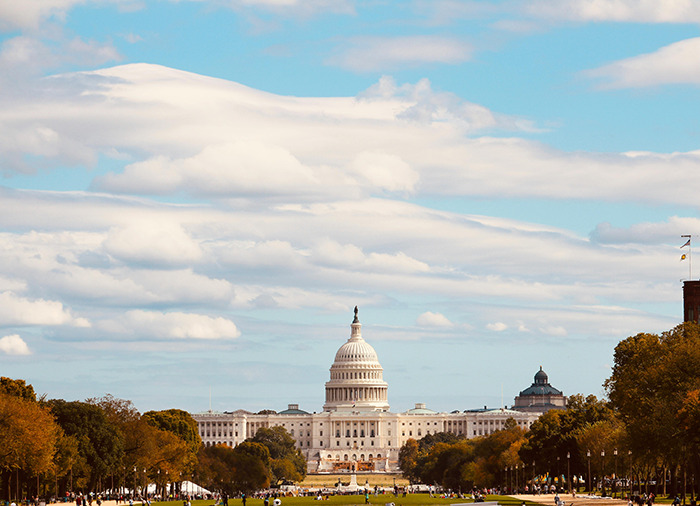
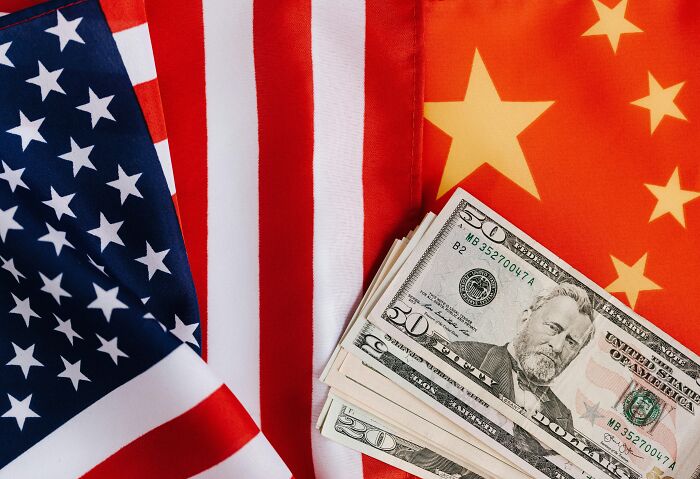


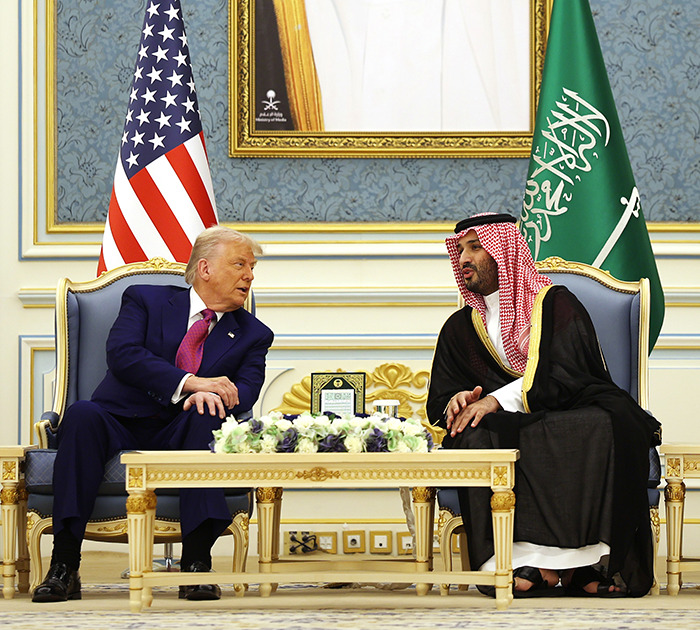



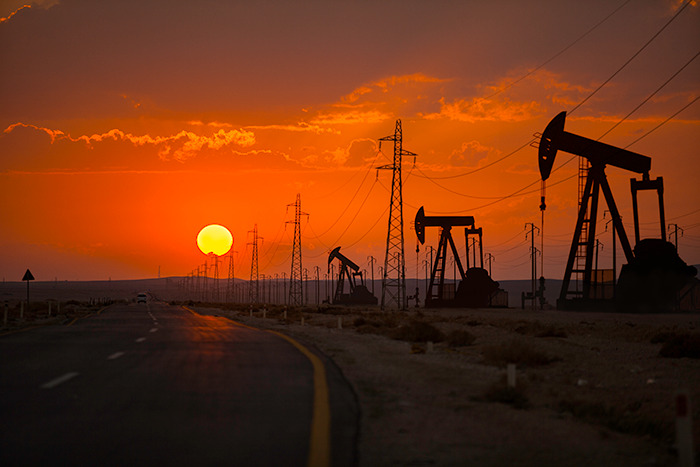



17
1